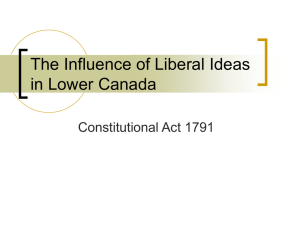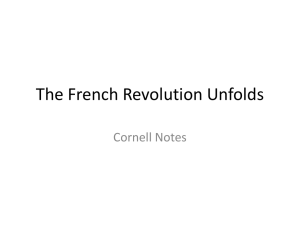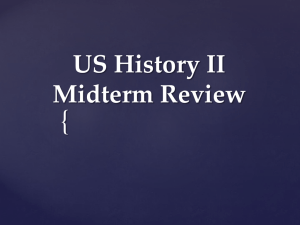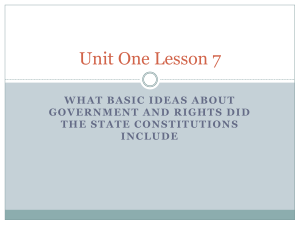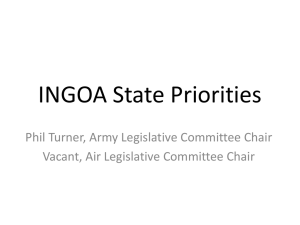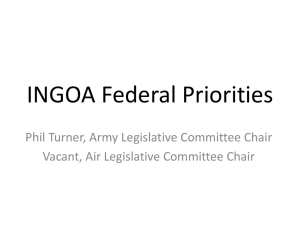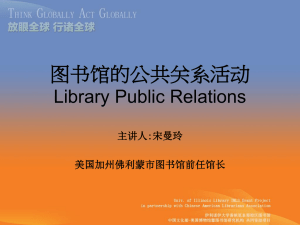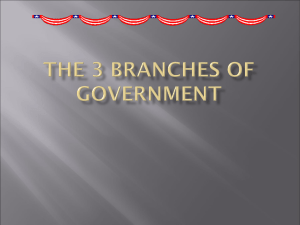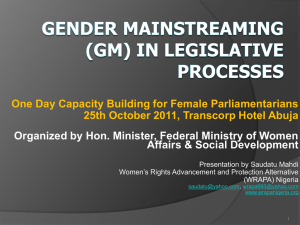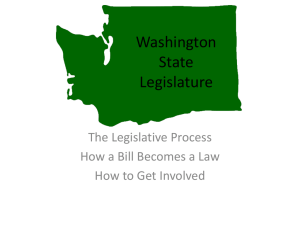Chapter 4, Lesson 3
advertisement
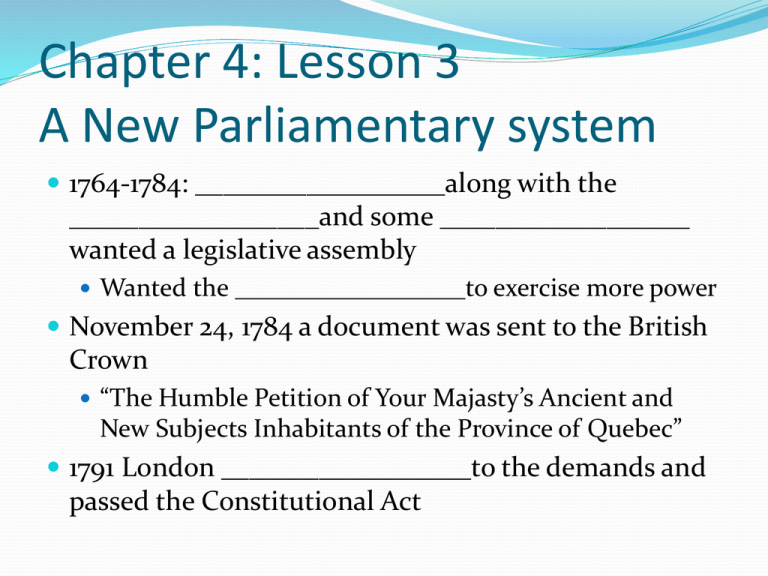
Chapter 4: Lesson 3 A New Parliamentary system 1764-1784: __________________along with the __________________and some __________________ wanted a legislative assembly Wanted the __________________to exercise more power November 24, 1784 a document was sent to the British Crown “The Humble Petition of Your Majasty’s Ancient and New Subjects Inhabitants of the Province of Quebec” 1791 London __________________to the demands and passed the Constitutional Act Constitutional Act 1791 In an effort to satisfy __________________, but also protect the rights of the __________________. The Province of Quebec was divided into two distinct territories: __________________ __________________ Each of the new colonies was granted a __________________________. THE THIRD CONSTITUTION The Constitutional Act of 1791 UPPER CANADA LOWER CANADA Territory •Lake Ontario to lake Superior (present day – Southern Ontario) •20 000 English-speaking Loyalists. •St. Lawrence valley – north to Labrador •160 000 (90% French-speaking) Laws British Civil and Criminal Law French Civil Law and British Criminal Law Form of Government Religion Land distribution system A parliamentary system with Legislative Assembly for both Upper Canada and Lower Canada Religious freedom for both Upper Canada and Lower Canada Township system Existing Seigneuries kept, new land would be townships. Lower Canada Great Britain Political Organization of Lower Canada 1791 (p. 9) British Government Colonial Secretary Governor General Executive Council Legislative Council Legislative Assembly (“The House”) The Voters (Population) Political Institutions in 1791 – due to launch of parliamentary system Institutions Functions Governor General (LC) Lieutenant Governor (UC) •Leader of government •Convene legislative Assembly at least once a year •Could dissolve assembly •Power of veto – submit directly to King •Appointed and directed civil servants •Leader of military One person in each Canada, appointed by the King of England Executive Council •Oversaw application of law •Government’s budget (civil service salaries, public works, etc) Nine members in each Canada, appointed for life by the Governor Legislative Council •Propose motions of law to Legislative assembly •Veto laws enacted by Legislative assembly At least 15 members in each Canada, appointed for life by the Governor •Propose motions of law, discuss •Voted on motions proposed by legislative council •Voted on taxes needed to run colony At least 50 representatives in each Canada, elected by the population for a fouryear term. Legislative Assembly Number of individuals The Process of Enacting a Law 1791 Legislative Assembly Legislative Council Governor General Executive Council Population Today Executive Council (Departmental Ministers) House of Commons Senate Cabinet Population The Elections 1791 – right to vote had conditions _________________________________ _________________________________(live in Great Britain or one of its colonies) Own __________________________________________ Gaps in the Parliamentary system of 1791 __________________________ – Governor was able to veto any bills Members of _____________________and _____________________has far-reaching powers, but were not elected. Were chosen by __________________, and for most part were __________________. The Executive Council, although responsible for the colony’s budget, were not _____________________________________. Britain wanted to give ________________________(avoid something like the American Revolution) Elected Representatives were not dumb, and ordered for more power. Workbook Assignment Please complete Pages 112 - 114
